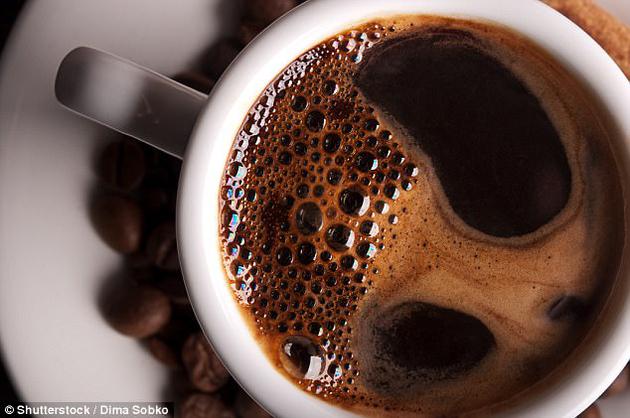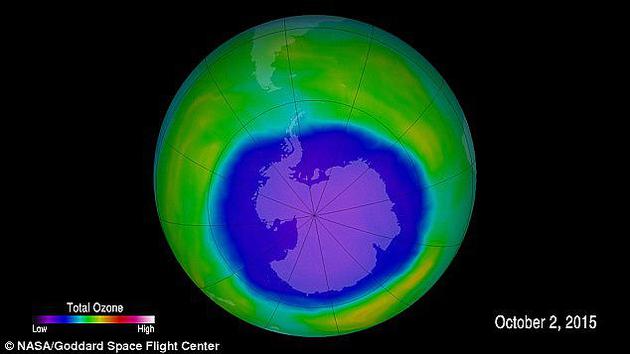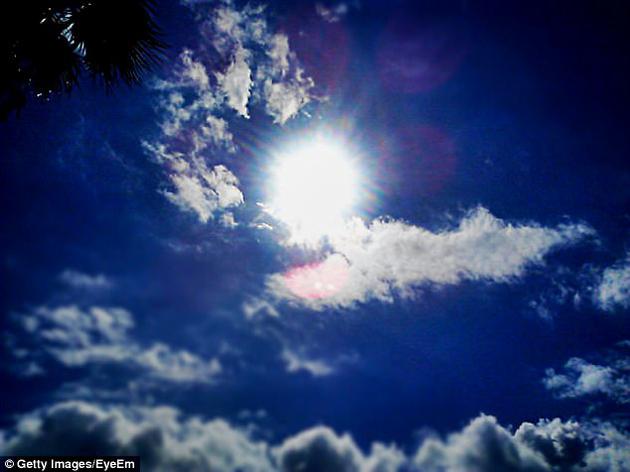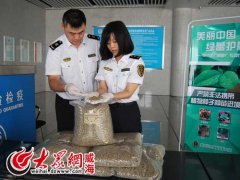WTF? The damage to the ozone layer should be caused by the coffee pot?
For professional baristas, please follow the coffee workshop (Wechat official account cafe_style)

The decaf we like to drink will seriously damage the ozone layer over Antarctica, according to new research. The decaf we like to drink will seriously damage the ozone layer over Antarctica, according to new research.

The picture shows the ozone layer over Antarctica. Purple and blue are the weakest areas of the ozone layer, while yellow and red are areas with more ozone. The picture shows the ozone layer over Antarctica. Purple and blue are the weakest areas of the ozone layer, while yellow and red are areas with more ozone.

Ozone is a gas composed of three oxygen molecules, which is potentially harmful to human health near the ground, but at the top of the atmosphere, ozone can play a protective role by absorbing ultraviolet radiation from the sun. Ozone is a gas composed of three oxygen molecules, which is potentially harmful to human health near the ground, but at the top of the atmosphere, ozone can play a protective role by absorbing ultraviolet radiation from the sun.
Beijing, July 13 (Xinhua) according to foreign media reports, the latest research by scientists shows that people's favorite low-caffeine coffee may damage the ozone layer. Decaf hot drinks contain a solvent, dichloromethane (dichloromethane), which, along with the massive production of dichloromethane, will delay the recovery of the ozone layer in Antarctica for 30 years. WTF? The damage to the ozone layer should be caused by the coffee pot?
Now scientists are calling for better control of dichloromethane, but the chemical is still found in decaf, hair styling agents, deodorants and a range of household cleaners. Ozone is a gas made up of three oxygen molecules, which can pose a threat to people's health near the ground, but ozone can protect human beings in the upper atmosphere and absorb ultraviolet radiation from the sun.
Dichloromethane is harmful because it floats upward and decomposes in the stratosphere close to the ozone layer. When the chemical breaks down, it destroys the surrounding molecules in the ozone layer, making the ozone hole larger and larger. As the ozone hole becomes larger, it will expose humans to the risk level of ultraviolet b radiation, which can tear up human DNA and cause carcinogenic mutations.
In the 1980s, scientists found that the unregulated use of chlorofluorocarbons and stable chlorine chemicals in household chemicals would gradually expand the ozone hole. In 1987, the United Nations Montreal Agreement banned the use of this harmful chemical, but dichloromethane, a volatile, ozone-depleting substance, was not banned.
Since the implementation of the Montreal Agreement, stratospheric ozone has begun to recover gradually, and the ozone index is expected to return to the level of the 1980s in the second half of this century. It is expected that the Antarctic "ozone hole" will be completely repaired in 2046-2057.
But now scientists warn that dichloromethane may play a role in ozone depletion and its use is increasing, such as decaf coffee containing dichloromethane. Dr Ryan Hossaini, a researcher at the University of Lancaster in the UK, said: "dichloromethane is a man-made, ozone-depleting chemical used in a range of industrial applications."
Unlike chlorofluorocarbons (CFCs) and similar stable gases, which cause ozone depletion, dichloromethane has a short atmospheric lifetime and is therefore not bound by the Montreal Agreement. Nevertheless, the increase in dichloromethane production has led to a rapid increase in atmospheric concentrations over the past decade.
Although there is not much ozone depletion due to dichloromethane at present, it is not clear how much the gas will be in the atmosphere in the future, which may pose a threat to ozone. "our results show that continued growth in dichloromethane concentrations will significantly delay the recovery of the ozone layer and offset the benign effects of the future Montreal Agreement," Hosani said.
Dr Stephen Montzka (Stephen Montzka) of the National Oceanic and Atmospheric Administration (NOAA) said: "the increase in the concentration of dichloromethane that we have measured is surprising and unexpected. The concentration of dichloromethane in the atmosphere began to rise slowly in the late 1990s, but the average concentration of dichloromethane in the global atmosphere tripled in early 2000."
Dr. Montezka stressed that the use of this dangerous chemical would potentially increase the use of chlorofluorocarbons banned in the 1980s. Professor Martin Chipfield (Martyn Chipperfield) of the Earth Environment Branch of the University of Leeds in the UK said that we need to continue to monitor the concentration of dichloromethane in the atmosphere and determine its source.
The current plan for long-term recovery of the ozone layer from the atmosphere under the influence of HCFCs is on the right track, but the increasing dichloromethane creates some uncertainties for us to predict the future ozone and climate. Dr. Hosani said that ozone is an important climate gas, it is affected by many factors, the gradual increase of dichloromethane will lead to ozone depletion, which is of great significance to the future climate impact. We should be aware of the threat posed by the gradual increase in dichloromethane and similar chemicals to stratospheric ozone, which are not bound by the Montreal Agreement and that much remains to be done to better understand and quantify the sources of dichloromethane in the atmosphere.
Important Notice :
前街咖啡 FrontStreet Coffee has moved to new addredd:
FrontStreet Coffee Address: 315,Donghua East Road,GuangZhou
Tel:020 38364473
- Prev

Can raw coffee beans sprout? Passengers carrying 60 kilograms of raw coffee beans into the country were returned.
Can raw coffee beans sprout? Passengers carrying 60 kilograms of raw coffee beans into the country were returned to professional baristas for communication. Recently, staff of Shandong Weihai entry-exit Inspection and Quarantine Bureau found that a passenger from Incheon, South Korea, attempted to bring large quantities of raw coffee beans into the country illegally during quarantine inspection at the seaport port. According to investigation, the batch
- Next

What is a single cup of coffee?
Following Cafe Review (Wechat official account vdailycom) found that Beautiful Cafe opened a small shop of its own. What is an individual coffee? As the name implies, it is a single variety of coffee. Coffee beans produced in a certain area are coffee made from coffee powder ground from a single type of coffee rather than mixed coffee, that is, single-product coffee. And individual coffee is usually not served with coffee companions.
Related
- Why can American refills for free? The difference between Americano and American drip pot coffee
- Being chased out of the rain in front of Starbucks?! Store: Sheltering from rain under umbrellas poses a safety hazard
- The white moonlight has changed?! Lucky launches "Big Winter Pear American"
- Hand-brewed coffee three-stage method, high-sweet and universal brewing method to share! What does the high sweet water level of hand-brewed coffee mean?
- What is the difference between raw, refined and full espresso coffee? How to extract espresso and taste good?
- A complete list of coffee bean names and their meanings! What is Yejia Shefi coffee? Where is Mantelin coffee?
- What grade does Arida Manor Kaduai coffee beans belong to? What treatment is Arida ASD slow anaerobic sun exposure?
- The milk tea cup becomes smaller?! Overlord Tea Girl launches a new "Return to Yunnan" series
- Accused of selling counterfeit and high-priced coffee beans! Well-known boutique coffee brand "Oukelao" bowed and apologized!
- How to make espresso dumplings? Can I eat coffee and glutinous rice balls together?

